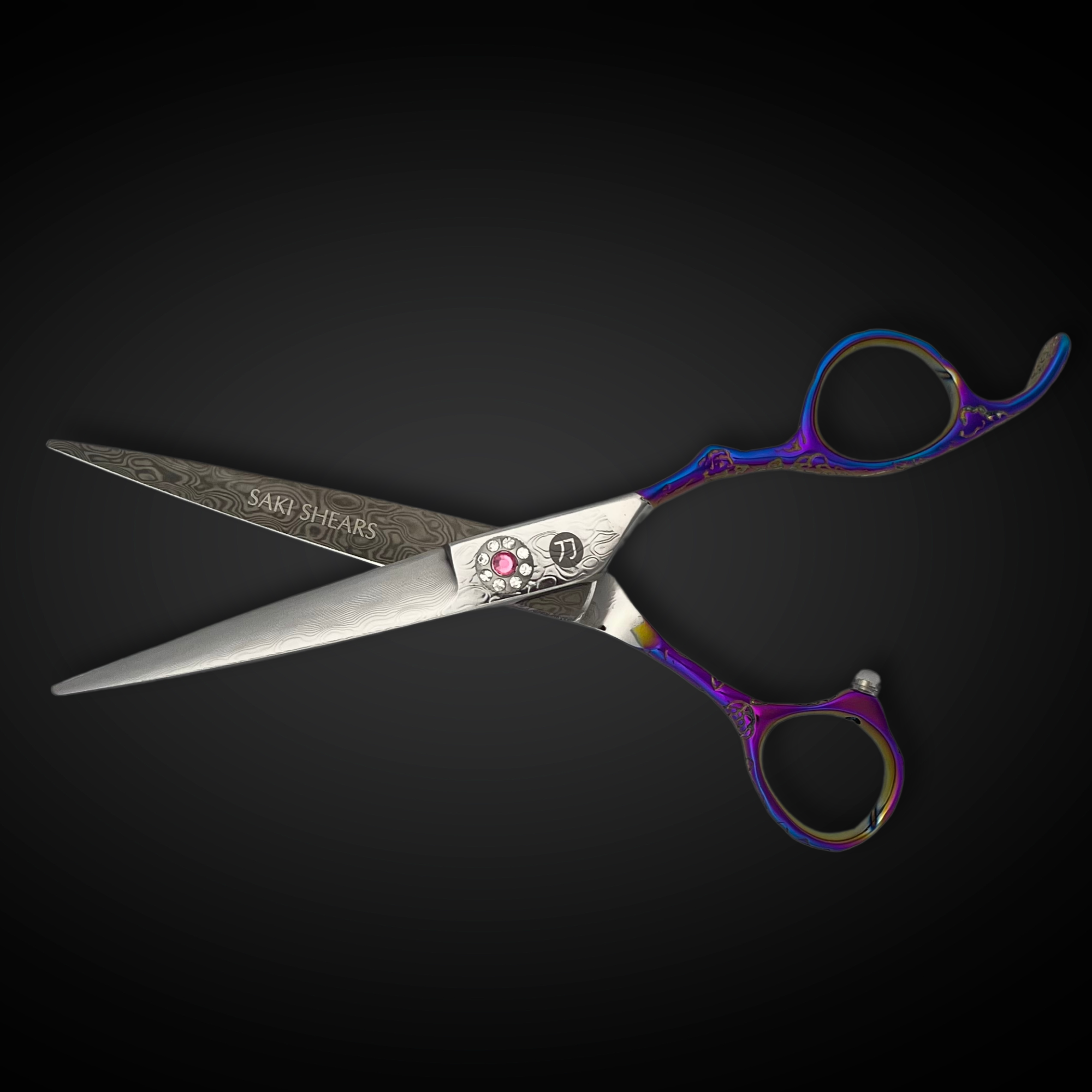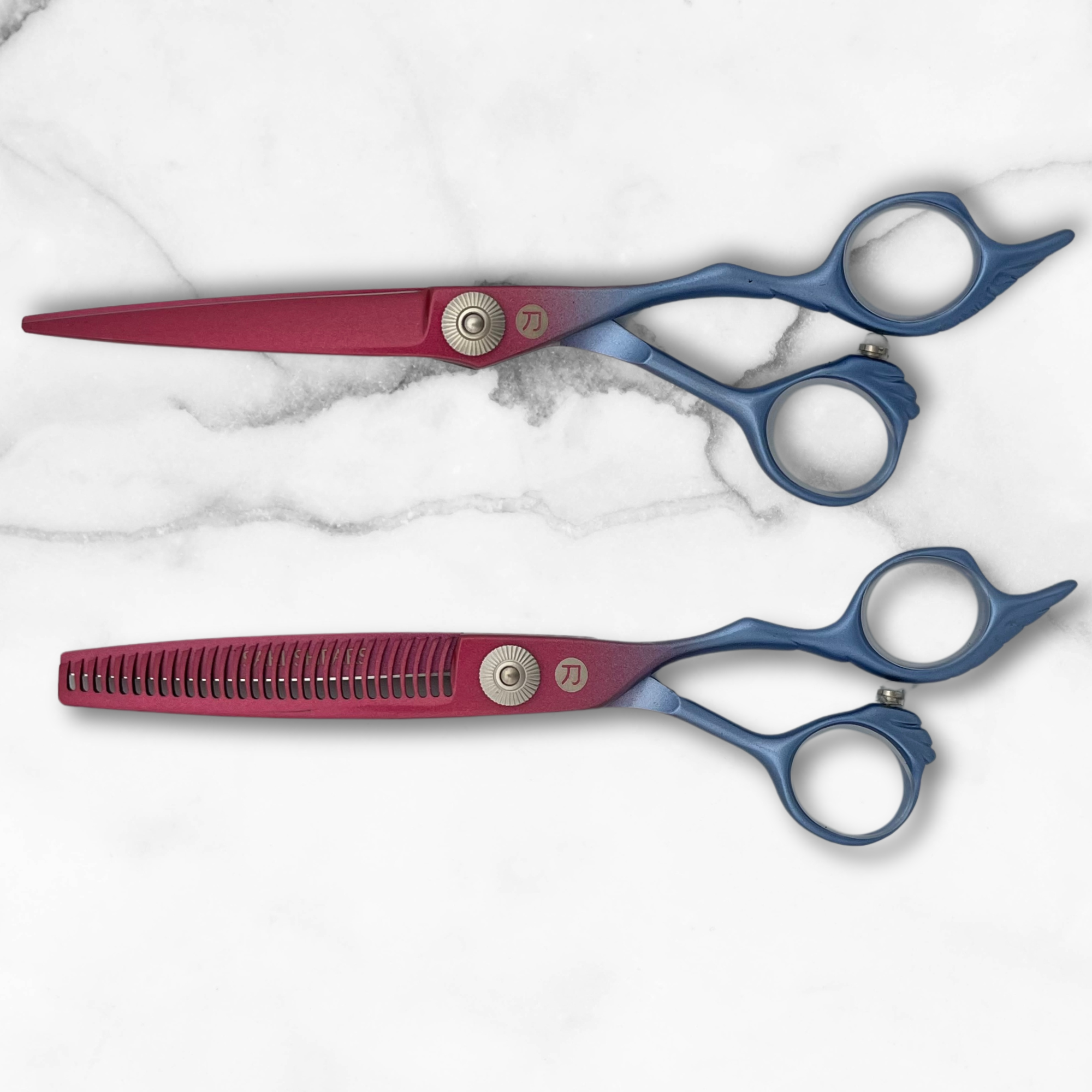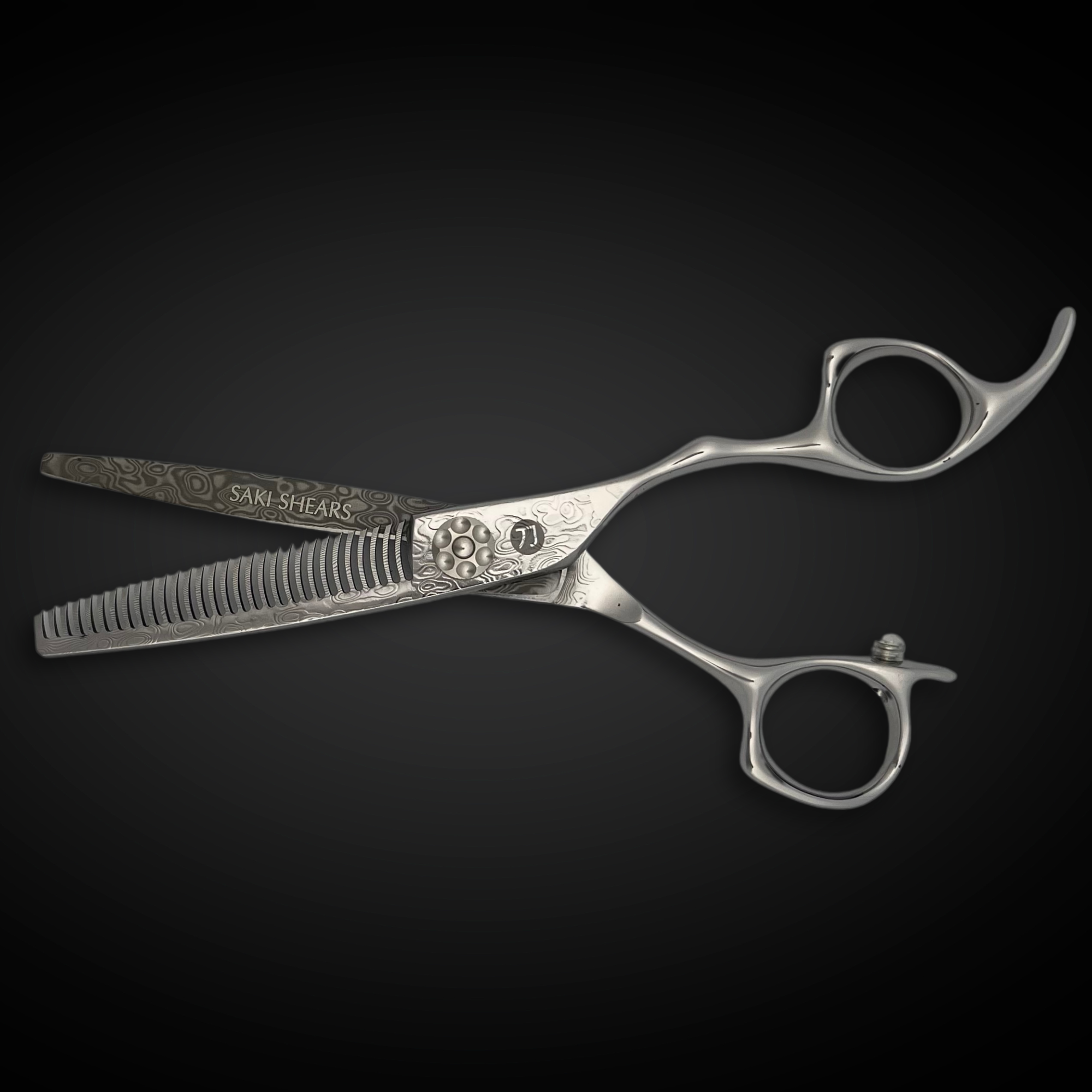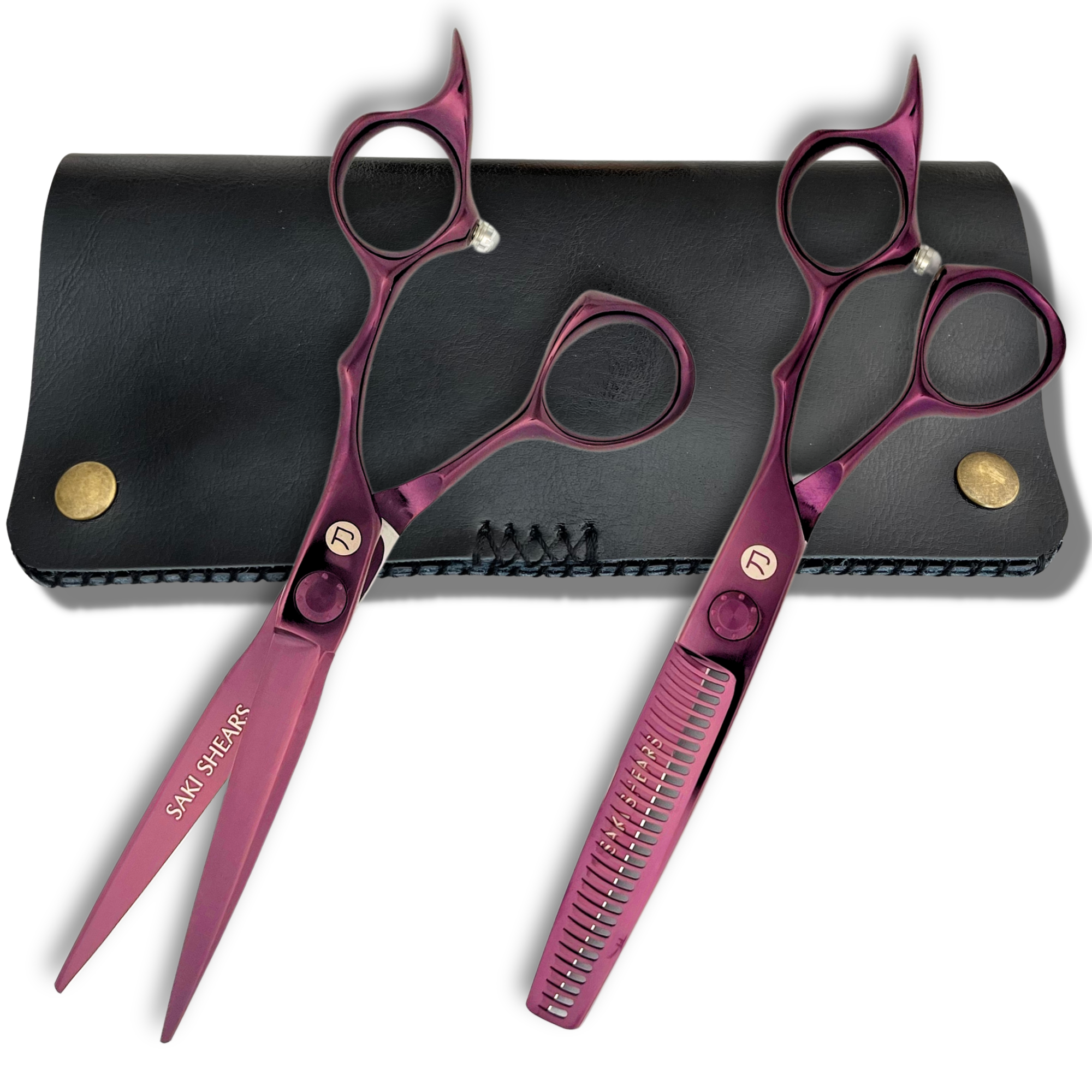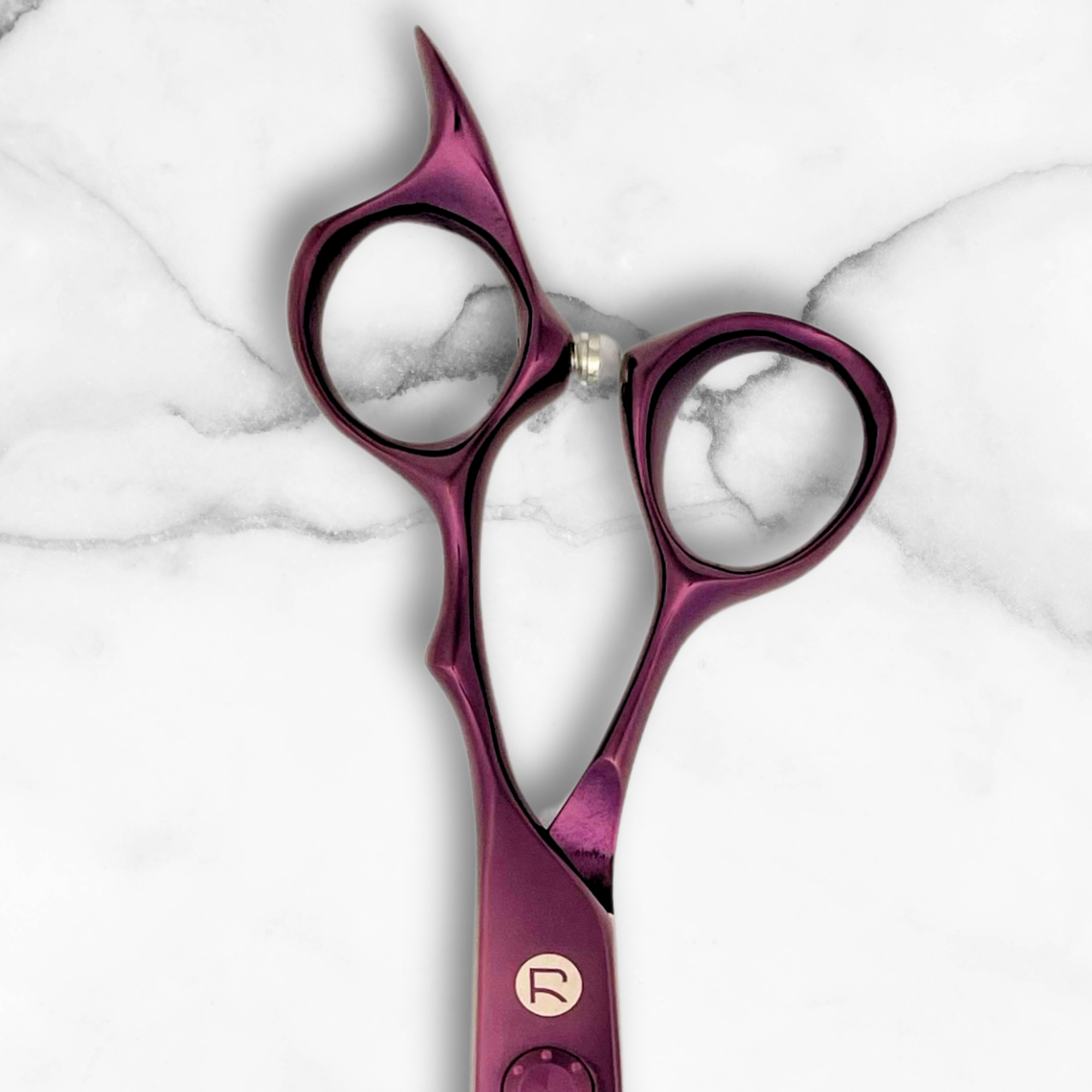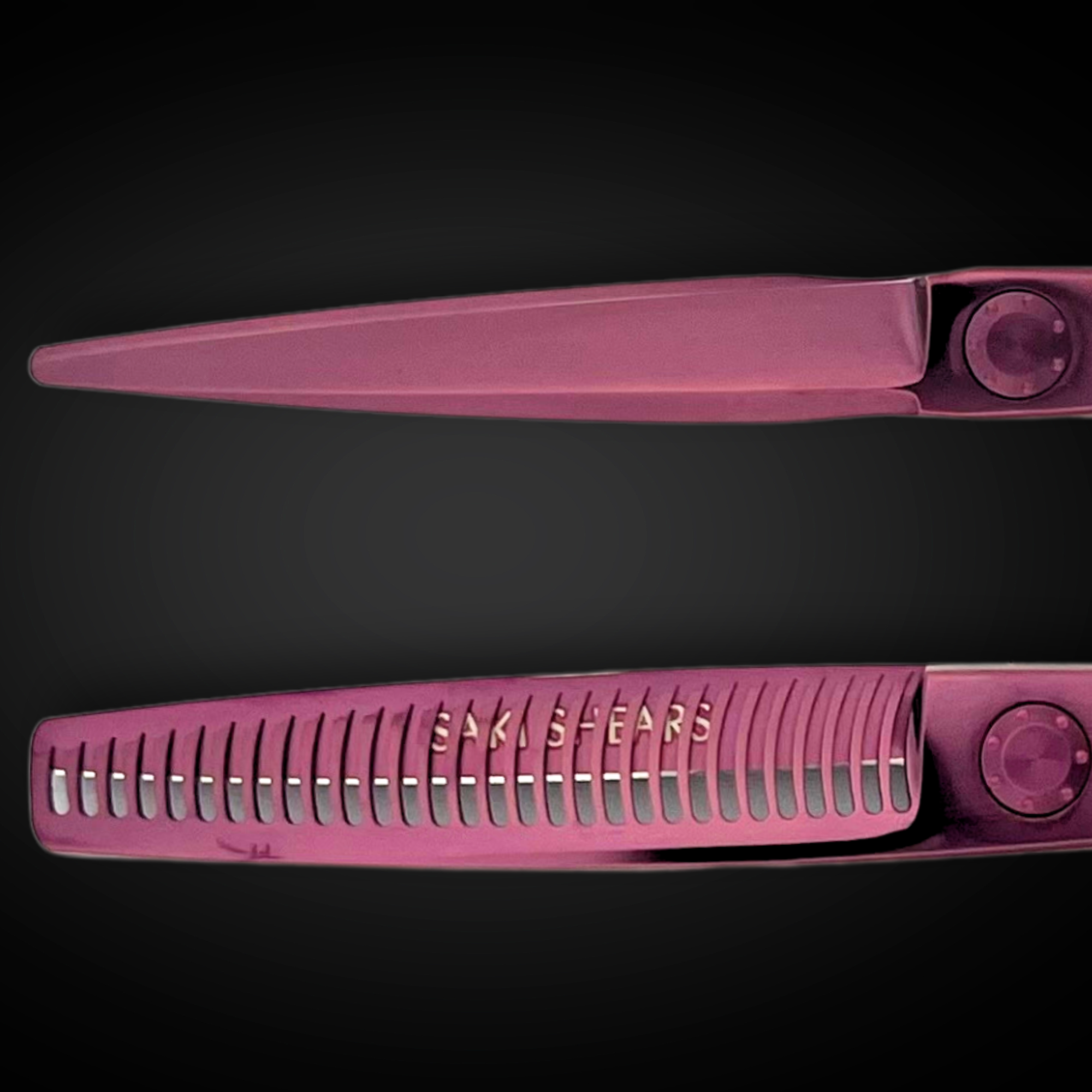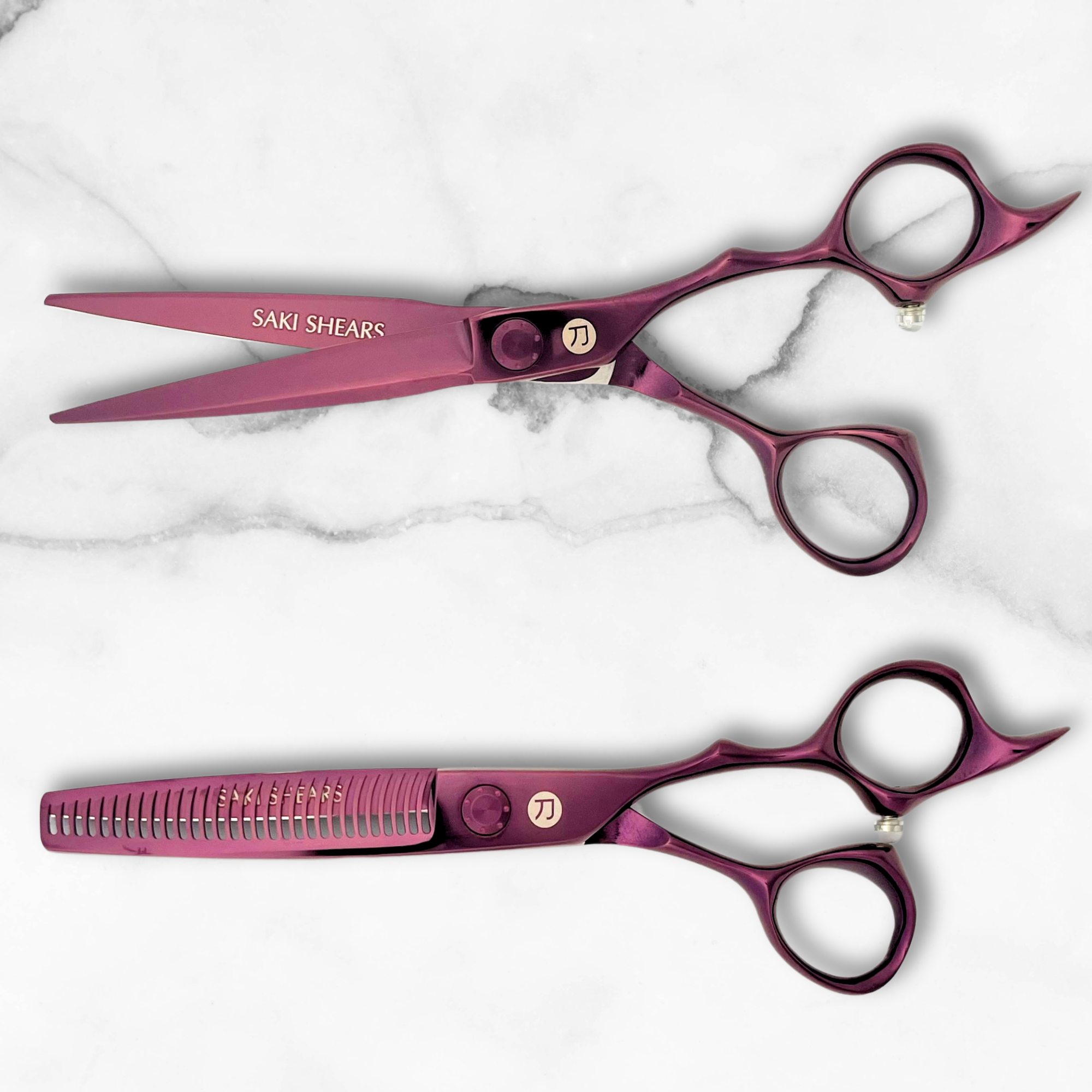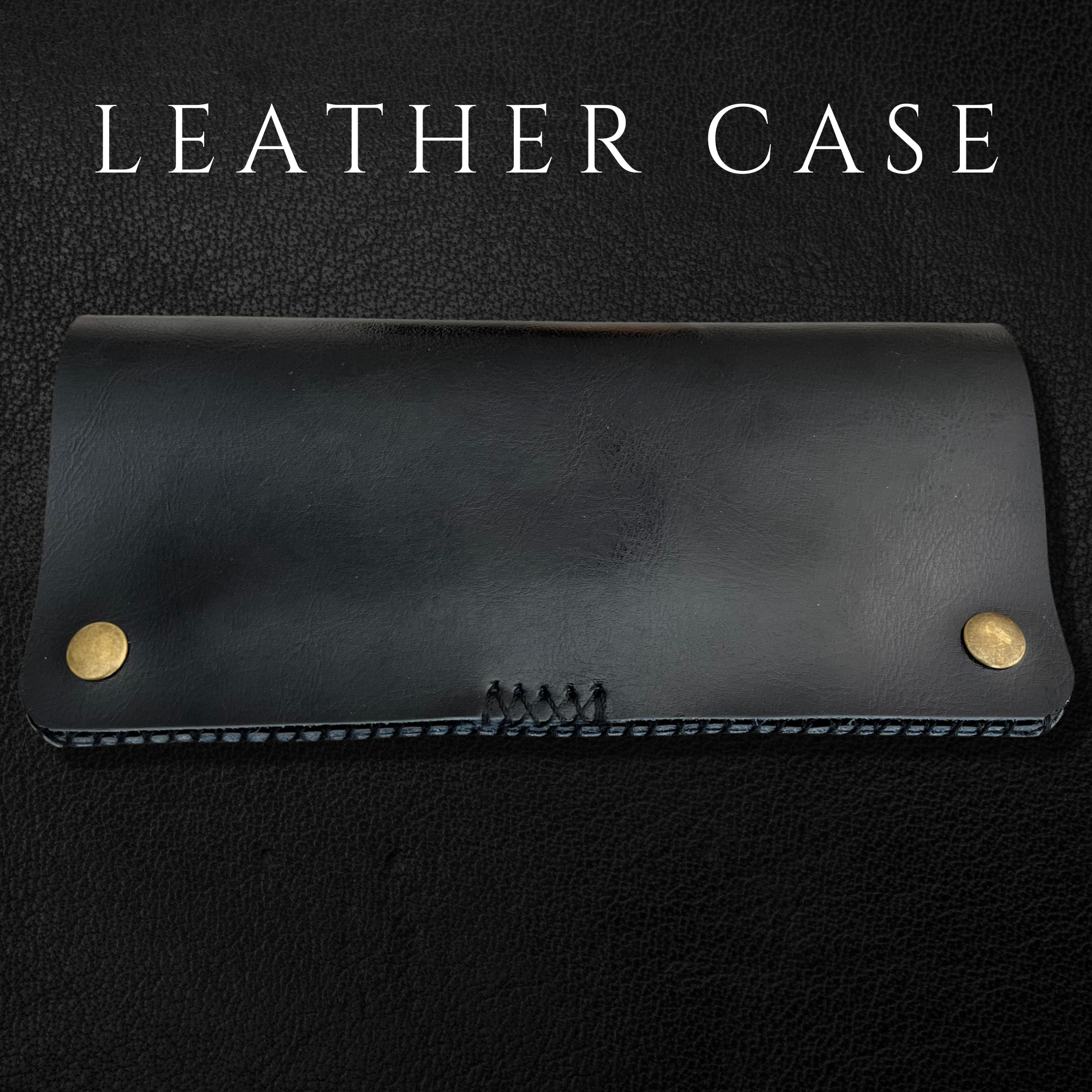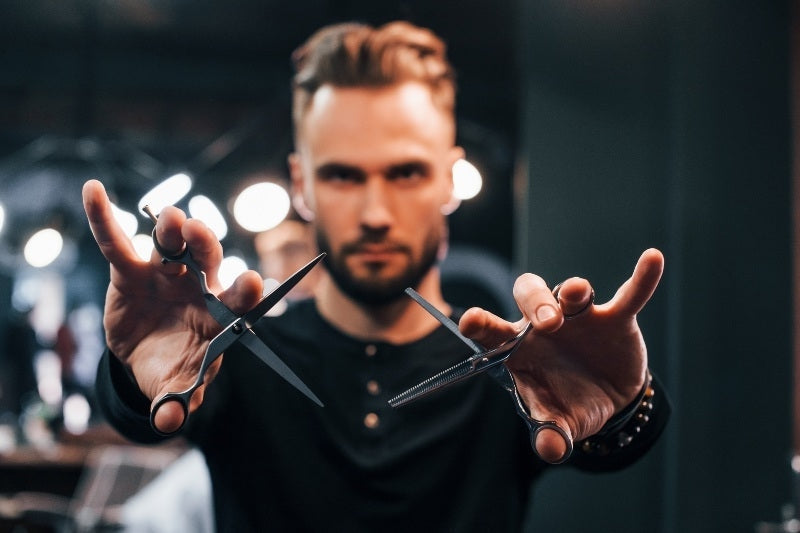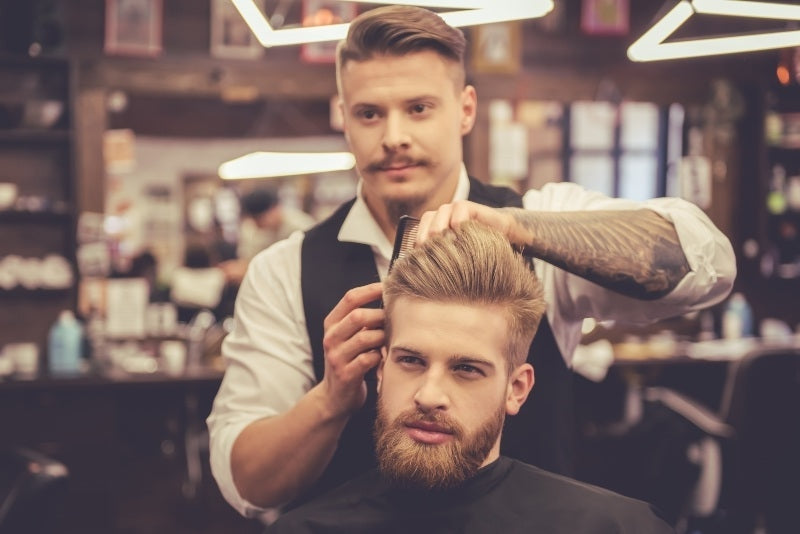Hair Shears Buying Guide
Looking to purchase a Professional pair of Hair Shears? Be sure to read this buying guide so that you can feel confident that you will know which type of hair shear will work best for you.
STEEL
When purchasing hair shears, you will usually find the Rockwell Scale measured hardness of steel or it may list the inclusion of a hardening element used in their steel such as Cobalt or Tungsten.
Typical stainless steels used in hair shears range from about (Rockwell Measurement Scale) Rc 48 to Rc 62. High quality precision shears generally range from Rc 54 to Rc 62. Hair shears softer than Rc 53 tend to be of lower quality. Generally, the harder the steel the more resistant to wear and in return, these will hold their edge much longer. However, a harder steel can often be more brittle and tend to chip and nick along the edge much easier if dropped or roughly handled.
Softer steels tend to be more flexible giving the blades a toughness that resists chipping and nicking. These softer steels also have the potential to obtain a sharper edge although that sharper edge may not last as long as the less keen edge on a very hard blade.
Saki Shears uses Japanese 440C Steel, VG-10 and Damascus Steel in the manufacture of our hair shears. If you are a professional stylist, these are the absolute best types of steel used to make premium hair shears.
TYPES OF HAIR SHEARS
Cutting Shears – cutting shears or hair scissors are your straight edged hair cutting tool.
Thinning Shears – thinning shears are used to thin and blend the hair without altering the hairstyle. They remove 50% of bulk from the hair. Thinning shears have one straight edge blade and one which has a comb like appearance called teeth.
Texturizing Shears- texturizing shears are used to add style and texture to the hair and remove 20% of bulk from the hair.
Lefty Shears – lefty shears are made for left handed hair stylists.
Lefty Compatible – lefty compatible means the hair shear is both right and left hand compatible, usually by flipping the handle.
EDGES
Convex Edge – a convex edge is used for wet hair as well as slide cutting. A Convex edge is usually sharpened at a 40-50 degree angle. The edge of the shear is sharpened to such a point that you can hardly make out the edge of the shear. It is because of this sharpness that you can do things such as slide cutting. A shear with a convex edge also cuts the hair with a minimum effort.
Semi Convex Edge- similar to a convex edge, a semi convex edge is sharpened on a 40-45 degree angle.
Bevel Edge- a bevel edge is usually sharpened on a 30-35 degree angle and is best for cutting dry or oily hair.
Custom Edge- is a convex edge sharpened on a 45-50 degree angle and then semi-convexed at a degree slightly lowered then the convex angle.
HANDLES
Even/Classic- a classic or even hair shear is what is known as thumb up cutting.
Offset – offset handles are whenthe finger holes are offset from the blades, making gripping easier and more comfortable. Also known as thumb down cutting.
Semi Offset- semi offset is when the thumb holes are placed in between the even and offset handle locations.
Crane/Butterfly- a crane handle is when the handle is lower than an offset handle. A crane handle is good for those who always cut thumb down.
Swivel/Twister- this is when the thumb hole actually rotates 360 degrees allowing you to cut thumb up or thumb down.
FEATURES
Concave Blades – the middle areas of each blade are ground down slightly leaving just the upper and lower edges of the blades touching. This helps make the shears feel smooth, as well as extend the life of the blade.
Forged – a forged shear is made from one single piece of metal. Once forged the shears are then hand finished until they are sharp. Forging is the best way to make a strong blade and forged shears will hold their edge much longer than shears made any other way.
Cryogenic Treatment- a cryogenic treatment means that the shear is brought down to a temperature of -300f which brings the steel molecules closer together resulting in a stronger metal.
CHOOSING YOUR SHEAR SIZE
When choosing the size of your shears, to some extent it depends on the type of cutting that you are doing as well as the size of your hands.
To find your ideal shear size, place a pair of scissors on the palm of your hand with the finger hole touching the base of your thumb, the tip of the blade should be in the last section of your middle finger.
The length of a scissor is measured from the very tip of the blade to the end of the longest finger hole. It does not include the finger rest.
ALIGNMENT
The blades on your shears need to be curved correctly in order to cut hair. To check for proper alignment hold the shears and slowly open and close them. If the blades rub this may mean the scissors are out of alignment. A pair of shears that are properly aligned will open and close smoothly.

